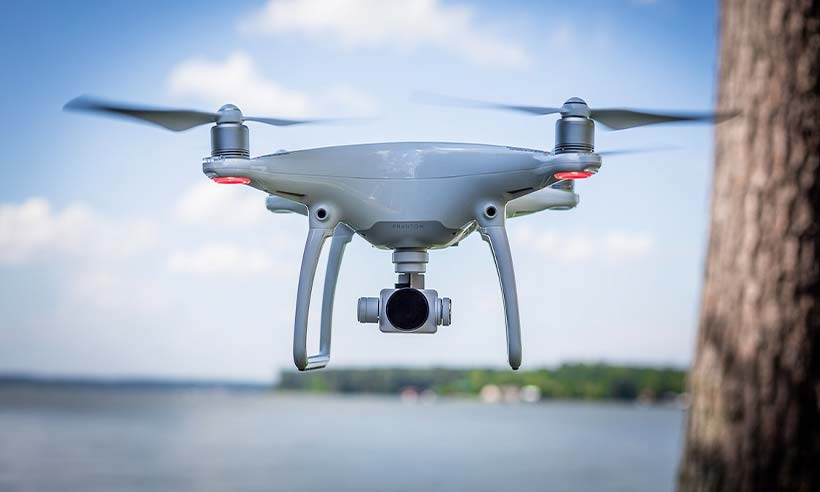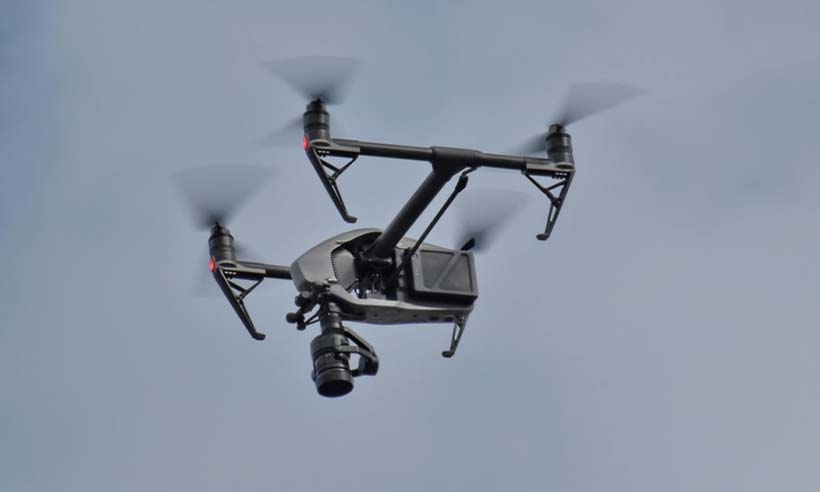Dronelost.com – Panama City Beach is a popular tourist destination located in the Gulf of Mexico. Known for its stunning stretches of white sand beaches, crystal clear water, and vibrant nightlife, the city has become a hub for drone enthusiasts who flock here to capture the area’s splendor from the sky. However, with the increasing number of drones flying in the area, the government has implemented Panama City Beach drone laws.
That matter ensures the safety of both the public and the environment. Whether you are a professional drone operator or just a hobbyist, it is essential to understand and abide by the drone laws in Panama City Beach.
Flying a drone may seem straightforward, but it comes with significant responsibility and requires knowledge of the regulations set forth by the Federal Aviation Administration (FAA) and the local authorities. We will provide you with a complete guide to the drone laws in Panama City Beach, covering all the critical information you need to fly your drone safely and legally in the area.
Besides Panama City Beach, it’s important to be aware of the drone laws in Georgia. Similar to Panama City Beach, Georgia has regulations for operating drones. These laws outline specific guidelines and restrictions, including limiting flying over certain areas, maintaining a safe distance from people and property, and complying with federal airspace regulations.
Drone operators must familiarize themselves with local and state laws, including drone ones. So, before you take your drone to the skies, let’s take a closer look at the drone laws in Panama City Beach and ensure that you are flying legally and safely.
Understanding Panama City Beach Drone Laws

As drones become increasingly popular, more and more regulations are being implemented to ensure safety in the skies. Suppose you plan on using a drone in Panama City Beach. In that case, it is crucial to understand the specific regulations set forth by local authorities to avoid any legal issues. Here is a step-by-step guide to understanding Panama City Beach drone laws:
1. Register Your Drone with the FAA
Before flying your drone in Panama City Beach, register it with the Federal Aviation Administration (FAA). This applies to all drones that weigh more than 0.55 pounds and less than 55 pounds. The registration process is quick and easy and can be done online at registermyuas.faa.gov. Once registered, you must label your drone with the registration number.
Additionally, you must follow all FAA regulations when flying your drone in Panama City Beach. This includes flying below 400 feet, keeping your drone within your visual line of sight, and avoiding flying over people or moving vehicles. For a complete list of FAA regulations, visit faa.gov/uas.
2. Obtain Permission from Property Owners
Before flying your drone over private property or any public area, you must obtain permission from the property owner or the appropriate authority. This includes beaches, parks, and other recreational areas. Flying your drone without permission can result in hefty fines and legal repercussions.
3. Adhere to Local Regulations
In addition to FAA regulations, Panama City Beach has drone regulations that must be followed. These regulations are designed to protect public safety and privacy. Here are some of the local drone regulations in Panama City Beach:
- Do not fly your drone over private property without permission
- Do not fly your drone over or near any emergency response efforts, such as fires or search and rescue missions
- Do not fly your drone in any commercial or high-traffic areas
- Do not fly your drone in any areas where it could interfere with local wildlife or marine life
- Do not fly your drone within five miles of an airport without permission
Violating these regulations can result in fines and legal consequences. Familiarizing yourself with all local regulations before flying your drone in Panama City Beach is important.
4. Use Common Sense and Consider Others
Finally, it is important to use common sense and be considerate of others when flying your drone in Panama City Beach. This means avoiding flying your drone over crowded areas or residential neighborhoods and being mindful of noise levels. Additionally, always be aware of your surroundings and any potential hazards that could injure yourself, others, or animals.
Following these guidelines and staying informed about any updates or changes in Panama City Beach drone regulations will allow you to enjoy a safe and legal flying experience.
The Consequences of Breaking Drone Laws in Panama City Beach

Drone laws have become increasingly strict recently, including in Panama City Beach. Knowing the rules and regulations before flying your drone in this area is essential. Failure to comply with these laws can result in significant consequences. Here is a step-by-step guide on the consequences of breaking drone laws in Panama City Beach:
Violation of FAA regulations
The Federal Aviation Administration has particular guidelines that drone pilots must follow. If you break these rules, you can face civil penalties, criminal charges, and jail time. This includes flying above 400 feet, flying near people or property without their consent, flying over private property without permission, and not registering your drone with the FAA.
Fines and Penalties
If you break drone laws in Panama City Beach, you can face hefty fines of up to thousands of dollars. For instance, if you violate an FAA regulation, you can face a fine of up to $1,414 per violation. On the other hand, the Panama City Beach municipality ordinance may charge you up to $50 for flying drones in restricted areas. However, you can face an expensive lawsuit if someone gets injured because of your drone.
Possible confiscation of your drone
If you break regulations, law enforcement officials can seize your drone if they suspect criminal activity or hazardous flying behavior. They can also seize it when enforcing the municipality ordinance. If your drone gets confiscated, it may be challenging to retrieve it, and it will cost you time and money.
Permanent damage to your reputation
Breaking drone laws in Panama City Beach can cause permanent harm to your reputation. You may lose your drone pilot license, causing significant financial implications. In addition, criminal charges or lawsuits can harm your career or business, making it harder to find work or get hired.
It is crucial to follow drone laws in Panama City Beach to avoid any consequences. Always have the right permits, authorizations, and licensing before flying your drone. Remember to adhere to the FAA’s guidelines and the municipality ordinance and abide by the state’s privacy laws. In addition, be mindful of your surroundings, be respectful to others, and always obey the regulations.
The Future of Drone Regulations in Panama City Beach

Besides Panama City Beach, it’s important to know the regulations governing drone usage in other locations, including London. Each location may have its own set of rules and guidelines when it comes to flying drones. For instance, London has established specific drone laws that drone operators must adhere to. These laws, enforced by the Civil Aviation Authority (CAA), include obtaining a permit for commercial drone operations, maintaining a maximum altitude limit, and avoiding restricted areas such as airports and sensitive locations.
Drone operators must familiarize themselves with local and international laws and regulations, such as the London drone laws, before flying in any given area to ensure responsible and lawful drone usage.
Authorities have been busy implementing regulations to ensure public safety and privacy. However, with the rapid pace of technological advancements, these regulations will likely be updated and expanded. Here are some potential changes that may occur:
- Licensing and Registration – Drone pilots are not required to obtain a license or register their drones with the Federal Aviation Administration (FAA) as long as they are not used commercially. However, this may change as the FAA considers implementing a mandatory registration and licensing process for drones, regardless of why they are being flown.
- Increased No-Fly Zones – Drone pilots are prohibited from flying their drones within a 5-mile radius of the Panama City-Bay County International Airport and within 3 miles of the Naval Support Activity Panama City. However, as the potential for drone-related accidents or incidents grows, authorities may expand these no-fly zones to include other areas where drones could threaten public safety, such as congested beaches and public events.
- Stricter Penalties for Violations – As drone regulations become more common and well-known, authorities may impose stricter penalties for those who violate them. Currently, those who operate a drone in prohibited areas or in a manner that endangers others may face civil or criminal charges. Still, as drone-related incidents become more frequent, authorities may consider increasing the severity of these penalties to deter careless or reckless drone operations.
- Counter-Drone Technology – With the potential for drones to be used for nefarious purposes, such as spying or even conducting attacks, authorities may implement counter-drone technology to prevent unauthorized or malicious drone activity. This could include radio frequency jammers, drones equipped with nets or other countermeasures, and even trained birds of prey that can take down rogue drones in mid-air.
- Expanded Use Cases for Drones – While many of the proposed changes to drone regulations may seem restrictive, there are also opportunities for expanded drone use cases that could benefit Panama City Beach residents and tourists. For example, drones could monitor wildlife populations, survey coastal erosion, or deliver supplies to remote areas. As drones continue to evolve and become more advanced, they may even be used to transport people or provide emergency medical services.
Ultimately, the future of drone regulations in Panama City Beach will depend on the success and safety of current regulations and the ongoing development of new technologies and use cases for drones. By balancing the need for public safety and privacy with the potential benefits of drones, authorities can ensure that drones continue to be valuable tool for individuals and organizations in Panama City Beach.
Conclusion
In conclusion, the drone laws in Panama City Beach are strictly enforced to ensure residents’ and tourists’ safety and privacy. The guidelines set by the FAA and the city council are designed to prevent accidents and disturbances that may harm people and property. As a drone user, it is important to familiarize yourself with the rules and regulations before flying your drone in public places. Doing so lets you enjoy the stunning scenery and capture stunning aerial footage without breaking the law. We hope this article has provided valuable insights into Panama City Beach’s drone laws and encourages you to fly responsibly.
